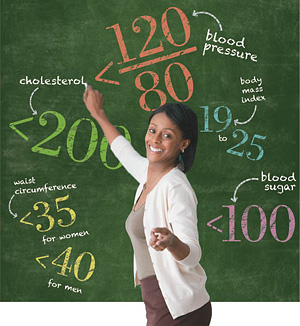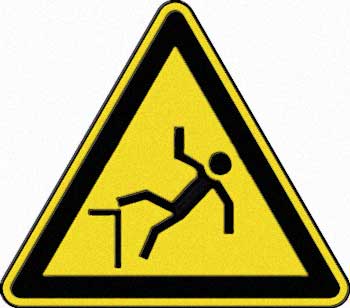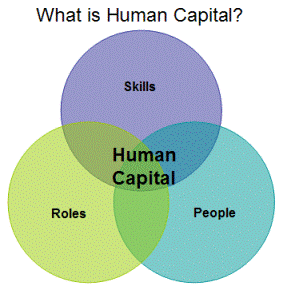 People who smoke take at least 10 years off their life expectancy, a new study has found.On the other hand, those who kick the habit before age 40 reduce the excess risk of death associated with continued smoking by about 90%, according to the study in Thursdays New England Journal of Medicine.
People who smoke take at least 10 years off their life expectancy, a new study has found.On the other hand, those who kick the habit before age 40 reduce the excess risk of death associated with continued smoking by about 90%, according to the study in Thursdays New England Journal of Medicine.
Author: Randy
Managing Human Capital Risk
 Human resource risk is the chance that bad outcomes will occur in some aspect of HR. Those risks get attention when the bad outcomes threaten the overall organization and its goals. Then it becomes a business risk.
Human resource risk is the chance that bad outcomes will occur in some aspect of HR. Those risks get attention when the bad outcomes threaten the overall organization and its goals. Then it becomes a business risk.
Employee turnover, an example of one type of HR risk, becomes a business risk when it could threaten the viability of the business. Business risk matters because it has the attention of everyone at the top of the organization.
Among important human resource risks that affect business outcomes are class-action litigation and other compliance and regulatory issues, the loss of key employees and critical knowledge, talent-management gaps that make it difficult to get employees with needed skills, and individual employee behaviors that create liability issues (e.g., imprudent investment decisions or ethical scandals that damage brand value).
Interestingly, the most important risk associated with human capital in a survey of HR and risk managers that was conducted as part of the study was a “shortage of critical skills within your company’s workforce.”
via Human Resource Executive Online | Managing Human Capital Risk.
The Risk of Mindless Eating
 What does it mean to mindlessly eat?
What does it mean to mindlessly eat?
Most of us don’t overeat because we’re hungry. We overeat because of family and friends, packages and plates, names and numbers, labels and lights, colors and candles, shapes and smells, distractions and distances, cupboards and containers.
Studies show that the average person makes around 250 decisions about food every day – breakfast or no breakfast? Pop-tart or bagel? Part of it or all of it? Kitchen or car? Yet out of these 200+ food decisions, most we cannot really explain. Mindless Eating shows what these decisions are and how to make them work for you rather than against you.
via Mindless Eating.
Why is fall protection important?
Falls are among the most common causes of serious work related injuries and deaths. Employers must set up the work place to prevent employees from falling off of overhead platforms, elevated work stations or into holes in the floor and walls.
Knowing Your Numbers Could Save Your Life
 If the oil light comes on in your car do you ignore it or do you bring it to a mechanic to tell you what’s wrong and how to fix it? It’s the same way with your health except you can replace the car but not your health. That’s why it’s so critical to know and monitor your target numbers.
If the oil light comes on in your car do you ignore it or do you bring it to a mechanic to tell you what’s wrong and how to fix it? It’s the same way with your health except you can replace the car but not your health. That’s why it’s so critical to know and monitor your target numbers.
Below are the healthy ranges to work toward. You’ll often see these written out with clinical terms like mg/dL and mm Hg. Your medical provider can explain those terms. For you, the important thing is the numbers themselves:
- Blood Pressure – less than 120/80
- Cholesterol Total – below 200
- LDL – below 130
- HDL – above 50 for women – above 40 for men
- Triglycerides – below 150
- Glucose (fasting) – between 70 and 99
- BMI – between 18.5 and 24.9
It’s important to monitor your numbers regularly by getting an annual physical, blood work and reviewing them with your doctor. It’s to late after you are sick because much of the damage to your body will not be repairable.
via Know Your Numbers.
The Generation Gap – How To Motivate The Baby Boomers
- General Attitude: “If you have it, flash it”
- Characteristics: Talkative, Bossy, Inquisitive, Stylish, and Competitive.
- Likes: Shopping, Winning, Leading, Vision.
- Dislikes: Paying of debts, Aging
Some famous Boomers include Bill Clinton. Tony Blair, George W Bush, Princess Diana, Vladimir Putin, Richard Branson and J.K. Rowling.
The baby boomers got their name from the big growth in population just after World War II. They were the largest generation (in terms of numbers) that the planet ever saw.
They arrived with a bang and have been noisy and attention demanding ever since. Every single stage of their lives has been era defining and trend setting.
When they decide to do something, they do it big. Nobody can afford not to notice them. Both literally and figuratively.
You are very likely to find many Baby Boomers still in your workforce. The first ones just entered retirement a few years ago.
This generation entered the working environment in a time that coincided with a steady economic boom, which took the whole world by storm.
When they finished university or college, there was no shortage of jobs.
Big changes started to happen in their time, which made their working environment very different from their parents.
Multinational companies were starting to become more common and rapid growth was considered the norm. This was fueled by three drivers. Quality, customer service and globalization.
Tips for Motivating The Boomers
- Make rewards and recognition public
- They will rely on you to generate energy and dynamism.
- They want to be involved in all decisions. They are passionate about transparency and democracy in decision making. Include them at all stages.
via The Generation Gap. How To Motivate Different Generations.
Protect Yourself From Violent Crime
 Don’t walk or jog early in the morning or late at night when the streets are deserted.
Don’t walk or jog early in the morning or late at night when the streets are deserted.- When out at night, try to have a friend walk with you.
- Carry only the money you’ll need on a particular day.
- Don’t display your cash or any other inviting targets such as pagers, cell phones, hand-held electronic games, or expensive jewelry and clothing.
- If you think someone is following you, switch directions or cross the street. If the person continues to follow you, move quickly toward an open store or restaurant or a lighted house. Don’t be afraid to yell for help.
- Try to park in well-lighted areas with good visibility and close to walkways, stores, and people.
- Make sure you have your key out as you approach your door.
- Always lock your car, even if it’s in your own driveway; never leave your motor running.
- Do everything you can to keep a stranger from getting into your car or to keep a stranger from forcing you into his or her car.
- If a dating partner has abused you, do not meet him or her alone. Do not let him or her in your home or car when you are alone.
- If you are a battered spouse, call the police or sheriff immediately. Assault is a crime, whether committed by a stranger or your spouse or any other family member. If you believe that you and your children are in danger, call a crisis hotline or a health center (the police can also make a referral) and leave immediately.
- If someone tries to rob you, give up your property—don’t give up your life.
- If you are robbed or assaulted, report the crime to the police. Try to describe the attacker accurately. Your actions can help prevent someone else from becoming a victim.
via Protect Yourself From Violent Crime — National Crime Prevention Council.
Driving Organizational Success Through Human Capital
Portable Ladder Safety
 Falls from portable ladders (step, straight, combination and extension) are one of the leading causes of occupational fatalities and injuries.
Falls from portable ladders (step, straight, combination and extension) are one of the leading causes of occupational fatalities and injuries.
- Read and follow all labels/markings on the ladder.
- Avoid electrical hazards! – Look for overhead power lines before handling a ladder. Avoid using a metal ladder near power lines or exposed energized electrical equipment.
- Always inspect the ladder prior to using it. If the ladder is damaged, it must be removed from service and tagged until repaired or discarded.
- Always maintain a 3-point (two hands and a foot, or two feet and a hand) contact on the ladder when climbing. Keep your body near the middle of the step and always face the ladder while climbing (see diagram).
- Only use ladders and appropriate accessories (ladder levelers, jacks or hooks) for their designed purposes.
- Ladders must be free of any slippery material on the rungs, steps or feet.
- Do not use a self-supporting ladder (e.g., step ladder) as a single ladder or in a partially closed position.
- Do not use the top step/rung of a ladder as a step/rung unless it was designed for that purpose.
- Use a ladder only on a stable and level surface, unless it has been secured (top or bottom) to prevent displacement.
- Do not place a ladder on boxes, barrels or other unstable bases to obtain additional height.
- Do not move or shift a ladder while a person or equipment is on the ladder.
- An extension or straight ladder used to access an elevated surface must extend at least 3 feet above the point of support (see diagram). Do not stand on the three top rungs of a straight, single or extension ladder.
- The proper angle for setting up a ladder is to place its base a quarter of the working length of the ladder from the wall or other vertical surface (see diagram).
- A ladder placed in any location where it can be displaced by other work activities must be secured to prevent displacement or a barricade must be erected to keep traffic away from the ladder.
- Be sure that all locks on an extension ladder are properly engaged.
- Do not exceed the maximum load rating of a ladder. Be aware of the ladder’s load rating and of the weight it is supporting, including the weight of any tools or equipment.
America’s High Blood Pressure Burden
 High Blood Pressure is often referred to as “The Silent Killer”. Here are the facts:
High Blood Pressure is often referred to as “The Silent Killer”. Here are the facts:
- About 1 in 3 U.S. adults—an estimated 68 million people—has high blood pressure.
- 69% of people who have a first heart attack, 77% of people who have a first stroke, and 74% of people with chronic heart failure have high blood pressure.
- High blood pressure is also a major risk factor for kidney disease.
- High blood pressure was listed as a primary or contributing cause of death for about 348,000 Americans in 2008.
- Costs directly attributable to high blood pressure for the nation total almost $131 billion annually in direct medical expenses and $25 billion in lost productivity.
- Less than half (46%) of people with high blood pressure have their condition under control.
- Almost 30% of American adults have prehypertension—blood pressure numbers that are higher than normal, but not yet in the high blood pressure range. Prehypertension raises your risk of developing high blood pressure.
- Reducing average population sodium intake from 3,300 mg to 2,300 mg per day may reduce cases of high blood pressure by 11 million and save 18 billion health care dollars annually.



